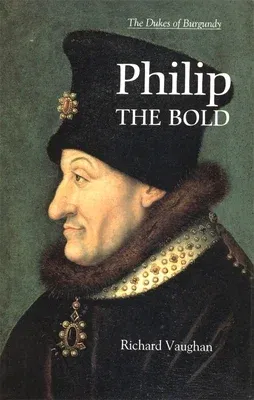A biography of Philip and a study of the emergence of the Burgundian
state under his aegis in the years 1384-1404, paying particular
attention to his crucial aquisition of Flanders. There is comprehensive
analysis of how Philip'sgovernment worked.
Boydell & Brewer does a major service by the simultaneous reissue of
Richard Vaughan's studies of the Valois Dukes of Burgundy. Four
distinguished scholars add extra value by contributing an introductory
chapter for each ducal reign, surveying its historiography since the
original publication... The story, which Vaughan tells with verve, has
its full share of dramatic turns[: ] this is much more, though, than
simply a narrative history; Vaughan's meticulousexplorations of the
administrative and financial structures that underpinned ducal
authority, and of the court and its culture, are integral to his
exposition [...] His achievement remains monumental. There are no
comparable, modern, in-depth studies of these four larger-than-life
players on the late medieval European stage, in English or in any other
language. They are, besides, eminently readable. Maurice Keen, TIMES
LITERARY SUPPLEMENT
Whenin 1363 the duke of Burgundy died without an heir, the duchy
returned to the French crown. John II's decision to give it to his
fourth son, Philip, had some logic behind it, given the independence of
the inhabitants; but in so doing he created the basis for a power which
was to threaten France's own existence in the following century, and
which was to become one of the most influential and glittering courts of
Europe. Much of this was due to the characterof Philip the Bold; by
marrying the daughter of the count of Flanders, he inherited the wealth
of the great Flemish towns in 1384, and the union of the two great
fiefdoms to the north and east of France under one ruler meant thatthe
resources of the duke of Burgundy were as great as those of the kingdom
itself. From 1392 onwards, he was at loggerheads with the regent of
France, his brother Louis, duke of Orleans, and this schism was to prove
fatal to thekingdom, weakening the administration and leading to the
French defeat by Henry V in 1415.
Richard Vaughan describes the process by which Philip fashioned this new
power, in particular his administrative techniques; but he also gives
due weight to the splendours of the new court, in the sphere of the
arts, and records the history of its one disastrous failure, the crusade
of Nicopolis in 1396. He also offers a portrait of Philip himself,
energetic, ambitious and shrewd, the driving force behind the new duchy
and its rapid rise to an influential place among the courts of Europe.

